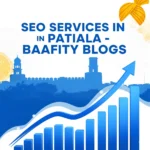AI tools are everywhere now—sometimes overwhelming. But good news: many are usable without paying (or at least with very generous free tiers). If you pick well, they’ll speed up your work, help with creativity, research, writing, or whatever your thing is. Here are ten free or freemium AI tools I think are worth your time in 2025, plus tips on how to get the most out of them.
What I Looked For
Before I jump into the tools, quick note on how I chose them:
-
Has a real free tier—not just a 3-day trial that disappears.
-
Useful in everyday tasks: writing, generating visuals, research, productivity.
-
Easy enough for non-experts to start.
-
Reliability—people actually use them and report they work.
Okay, here are the picks.
1. Google AI Studio / Google Free AI Tools
If you already use Google services, this might be the smoothest entry into AI. Google offers a number of AI products for free up to certain usage limits—things like translation, speech-to-text, natural language processing, video/image intelligence. Google Cloud+1
What’s nice: you can prototype stuff, experiment, even build small apps. If you need more, paid plans are there—but for many people, the free limit is enough.
2. Perplexity AI
If you often need to search, research, or dig up information, Perplexity is cool. It combines search with AI summarization. You ask questions, it gives answers + sources. Wikipedia+2The Human Prompts+2
When you don’t want to waste time jumping between browser tabs, Perplexity helps keep things consolidated. Just remember to check sources—AI summaries can sometimes misrepresent things.
3. ChatGPT (Free Version)
Probably obvious, but still deserves inclusion. Even the free tier of ChatGPT can do a lot: brainstorming, editing, summarizing, answering questions. It won’t have all the fancy extras, but for many tasks, it’s plenty.
If you haven’t tried version tricks (asking it to play roles, changing tone, etc.), those can amplify what you get out of free access.
4. Notion AI
For folks who are organized (or trying to be), Notion + its AI features is a strong combo. If you use Notion already, adding AI inside your docs for summarization, brainstorming, content drafting helps.
The free tier limits how many AI responses or usage per month, but it’s enough to test out ideas or use for lighter projects.
5. Canva AI / Magic Studio
Visuals matter, and not all of us are designers. Canva’s AI tools (Magic Write, background removal, templates) let you whip up graphics, social media posts, banners fast. The free version is pretty serviceable.
If you combine this with Perplexity or ChatGPT (for text ideas), you can pretty much do small campaigns or personal projects end-to-end without paying.
6. DALL-E 3 (via Bing Image Creator, or via ChatGPT)
Generating images from simple text prompts is more polished now than ever. DALL-E 3 gives very good results. If you don’t need very high volume or ultra high resolution, the free usage is useful.
Pro tip: being specific in prompts helps. Instead of “office design,” try “minimalist modern workspace with wooden desk, soft natural lighting, indoor plant.” You’ll get better visuals.
7. GitHub Copilot (Free Tier) / Replit AI
If you code (or want to learn), these help a lot. They assist in writing code, catching mistakes, suggesting improvements. The free tiers are limited, but enough for hobby projects or learning.
Even if you’re not coding, sometimes using them to prototype small scripts or automation is fun and productive.
8. Grammarly
Writing well is hard. Grammarly’s free version catches spelling, grammar, some style suggestions. If you write emails, blog posts, or anything text heavy, this tool saves time.
What it doesn’t do (in free) is super deep structural edits or genre-specific tone suggestions. But that’s okay—it’s still worth having.
9. Otter.ai
Meetings, interviews, recorded lectures—if you want transcripts, Otter.ai is very useful. The free tier gives you a certain number of transcription minutes per month.
Use cases: record discussions, then later skim through, search for keywords, pick out action items. Saves a lot of manual typing.
10. HubSpot AI (Free Tier) / Zapier AI
For marketing/sales/business work, these tools let you automate tasks or generate content ideas. Subject line generation, social post ideas, optimizing content. The free plans aren’t crazy fully featured but solid for small teams or solo creators. The Human Prompts
Zapier also helps linking tools together: “when this happens, trigger that,” so you can connect AI tools with your workflows. Even a few simple automations can cut down repetitive stuff.
Bonus Tips: How to Use These Tools Well Without Getting Burned
Because free doesn’t mean perfect. Here are some tricks to squeeze max value:
-
Know the limits. Free tiers often have caps (number of uses, prompts, speed). If you hit the limit, you’ll know and can plan accordingly.
-
Combine tools. Use one tool for research, another for drafting, another for visuals. For example: Perplexity → ChatGPT → Canva → Grammarly.
-
Be clear in your prompts. More context = better results. Don’t assume AI knows all your hidden assumptions.
-
Check quality & facts. AI can hallucinate or make up stuff. Especially when used for research or something public.
-
Watch privacy / terms. If you’re loading sensitive info into these tools, see how the tool uses/stores data.
-
Stay updated. Free tiers/features often change. A tool that’s generous today might restrict things later—or vice versa.
What to Try First
If this feels like too big a list, here’s a smaller starter combo that works well together (for many people):
-
ChatGPT for brainstorming & drafting
-
Perplexity for research
-
Canva or DALL-E 3 for visuals
-
Grammarly for polishing
Once you get comfortable, add one more: Otter.ai if you record stuff, or Zapier if you automate lots.
Final Thoughts
Free AI tools in 2025 are way better than what we had a few years ago. They won’t replace everything paid, but many are “good enough” for serious work. If you approach them smartly—know what you want, don’t expect miracles, verify when needed—they can boost productivity, creativity, and save loads of time.
If you want, I can put together a version of this blog tailored to Indian users (relevant pricing, tools, constraints) or to your specific field (e.g. content creation, education). Would that be helpful?



